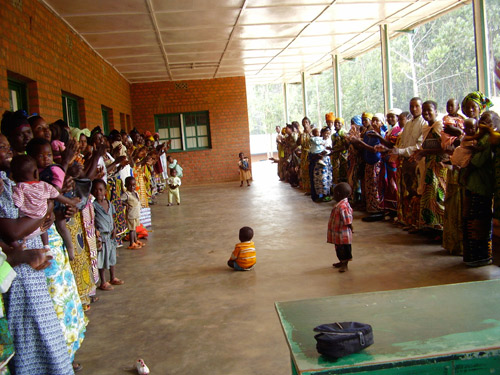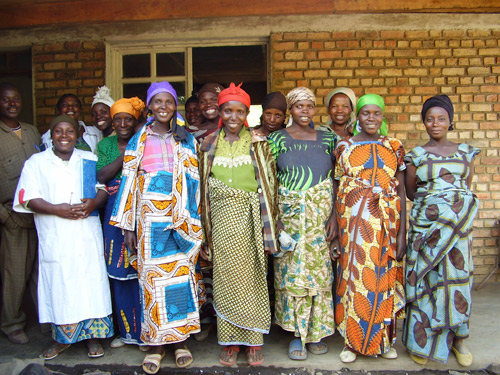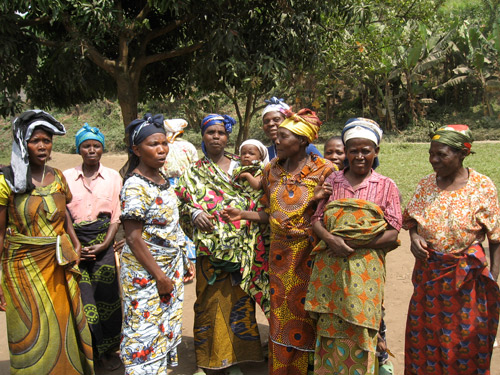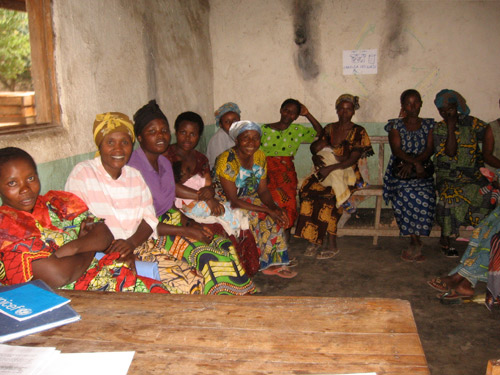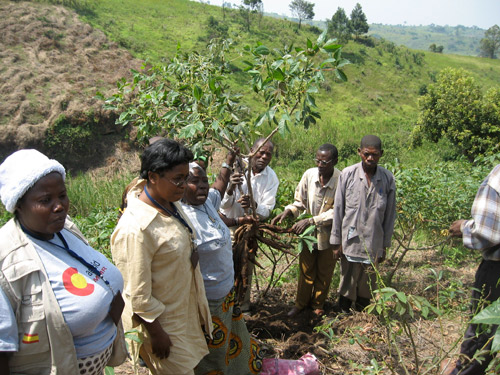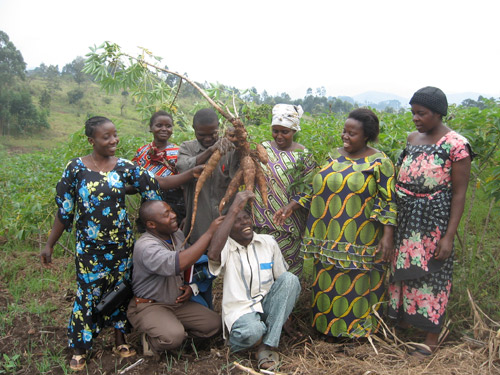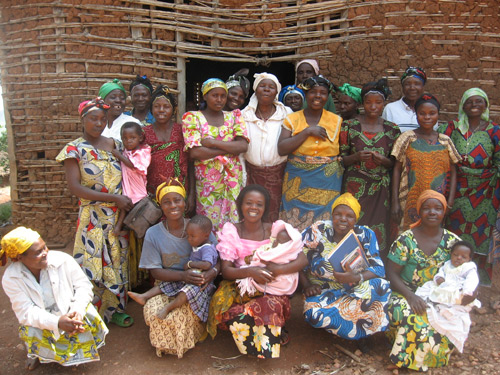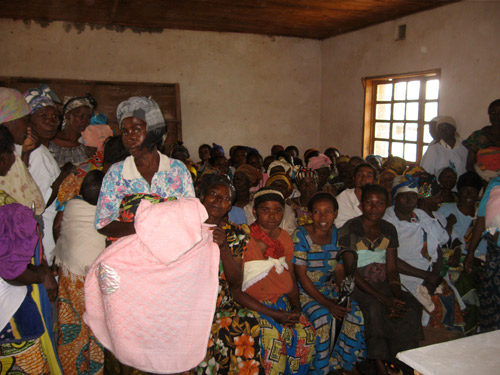‘Peace through health’ (PtH) is a relatively new movement in the world of peacebuilding, but according to a new study of an organisation in the Democratic Republic of Congo (DRC), it’s one that has potential to make a real impact in regions affected by conflict. Healing Africa? Reflections on the peace-building role of a health-based NGO operating in Eastern Democratic Republic of Congo, by Nicole D’Errico, Chris Wake and Rachel Wake was published this year in the journal Medicine, Conflict and Survival, and looks at the work of the organisation HEAL Africa. Chris Wake kindly agreed to discuss the article with Insight on Conflict, and Nicole D’Errico generously provided the photos used.
The premise for ‘peace through health’ (PtH) is a rather simple one. As the authors point out in their article, “war, by definition, is a public health problem, [so therefore] it follows that part of the solution lies in the hands of public health practitioners.” Practitioners of PtH have also developed an elegant parallel between the treatment of conflicts and the treatment of diseases, as “both relate to the management of risks”, according to Chris. “You can take measures to reduce the likelihood of a disease breaking out (‘primary’ care); you can treat its immediate effects ('secondary') or provide rehabilitation afterwards ('tertiary'). The same can also be said for responding to violent conflict. It’s an analogy that can probably be taken too far, but it’s useful when thinking about the potential role of the healthcare sector in peacebuilding activities.”
But if the theory behind Peace through Health can be readily understood, “there is a lack of detailed case-studies to demonstrate whether it can really be effective or not on the ground. So we decided to investigate in more depth an organisation that puts these ideas into practice.” Chris had previously written on the conflict in DRC and given its burgeoning reputation for branching out into the peacebuilding field, HEAL Africa seemed a natural choice for study. Rachel and Chris travelled to Goma in Eastern DRC in 2009 to carry out a short piece of field research. Here they met Nicole, who was working full-time with HEAL Africa and became their co-author.
There are few places in the world more in need of both better healthcare and greater peacebuilding efforts than DRC. According to the International Rescue Committee, over 5.4 million people have died in DRC since 1998 and the start of the Second Congolese War; and almost half of these are children under the age of 5. In fact, the majority of deaths are not victims of direct violence but have died from preventable diseases, because of the near-total collapse of the health system and the chronic insecurity that has left hundreds of thousands of people internally displaced. HEAL Africa is based in Goma, the largest city in the east of the country, the region which has seen the most devastating impacts of the war. Originally opening as a hospital offering training to Congolese doctors (under the name “Doctors on Call for Service”), HEAL Africa’s staff realised than many health gains from their work would be lost without peace. They therefore expanded their mandate and started a number of programmes that would normally be considered peacebuilding activities. As with their healthcare work designed to combat disease and physical injuries, their peacebuilding programmes can be said to operate at three different levels – primary, secondary and tertiary. HEAL’s community-level programmes seek to reduce the risks of the onset of conflict via 'primary' interventions, through for example working to alleviate inter-ethnic tensions or to create meaningful employment opportunities. At the ‘secondary’ level, HEAL Africa works to provide direct treatment for victims of the conflict in DRC, for example through providing surgical treatment to rape victims and trauma care to others affected by conflict. In 2008, ‘in-patient’ care was provided for more than 3,000 people suffering from different health problems generated during the conflict and mass migrations. At the ‘tertiary’ level, HEAL Africa works to rehabilitate people and communities from the effects of conflict, such as through intervening to help resolve land disputes from the conflict. Their ‘Gender and Justice’ legal assistance programme helps victims of rape bring their cases to court, aiming to contribute to an end to impunity for sexual violence.
HEAL Africa’s holistic approach to peacebuilding is well suited to the Congo, according to Chris: “DRC is often defined as ‘post-conflict’, but in fact it is not that simple, and there are significant areas suffering from conflict today or which may be impacted by new forms of conflict in the future – in some senses it could be defined as a region that is post-conflict, mid-conflict and even pre-conflict all at once."
The authors avoid making large claims for the achievements of HEAL Africa, noting that measuring success in peacebuilding is notoriously difficult and that “in the case of HEAL Africa, there are few systematic studies available on the outcomes of its projects, making an assessment of their ‘success rate’ very difficult to gauge”. However, they do identify four reasons to explain why HEAL Africa might have managed to branch out into peacebuilding work apparently so successfully:
-
they have managed to build a reputation for neutrality, working with a range of ethnic groups in the region;
-
their health work gives them tremendous access to remote communities, Internally Displaced People’s camps and the local population in Goma;
-
their health work gives them a great degree of legitimacy in the eyes of the local population, a rare commodity in conflict situations;
-
being based around a permanent hospital run by local staff, HEAL Africa has a long-term presence in the region, unlike some external peacebuilding efforts.
The authors also identify some limitations to the HEAL Africa model. In particular, as healthcare remains its core area of work, its other peacebuilding functions are sometimes cut back when there needs to be a trade-off between hospital treatment and other peacebuilding programmes, which can be frustrating for its staff. Overall though, the article paints a hopeful picture of the potential for healthcare professionals to proactively go beyond their traditional roles to make a valuable contribution to effective peacebuilding projects in local communities.
As noted above, Chris had previously written on the conflict in DRC; his 2008 essay Bringing the Local Back Into The DRC’s ‘Post’ Conflict Transition: What Role Should Local Solutions Play In Bringing Peace To The Congo? (pdf) was one of the winning essays in RUSI’s Nelson Mandela Essay Competition. In this Chris argued that, given the limitations of national-level efforts to end the violence in DRC, more attention should be paid both to the local causes of violence and to local-level solutions to conflict. Did his experiences studying HEAL Africa reinforce his belief that local conflict resolution should play a key role in DRC? “My time in Goma definitely emphasised the relevance of local conflict drivers in the context of the DRC, and showed me how grassroots groups can make a really important contribution in combating those local dynamics. The situation in DRC is extremely complex, and there is of course a need for stable, accountable government and both national and regional level peacebuilding. But the work of organisations such as HEAL Africa in local communities will be crucial to an improvement of the current situation in DRC because so many of the key causes of the conflict there originate at local levels”.
Ruairi Nolan, Insight on Conflict, 6 October 2010
[linked page_id="9390"] Photos supplied by Nicole D'Errico. Most photos are from the 'Safe Motherhood' and 'Nehemaiah' programmes of HEAL Africa.



